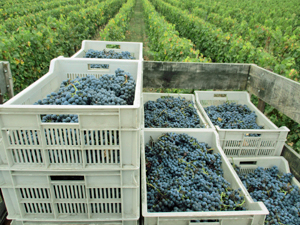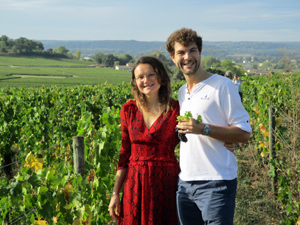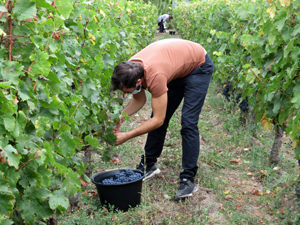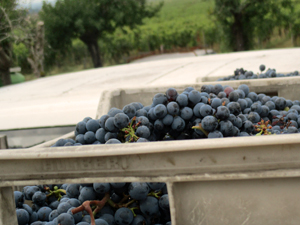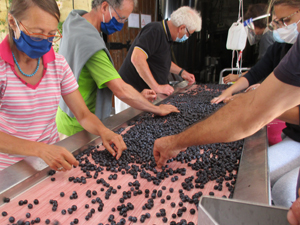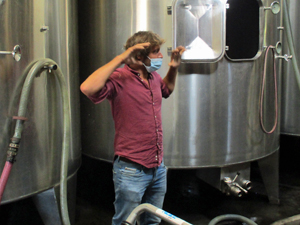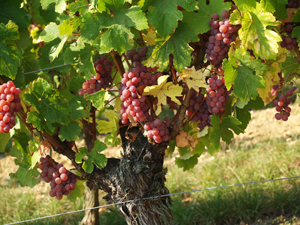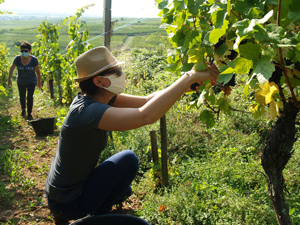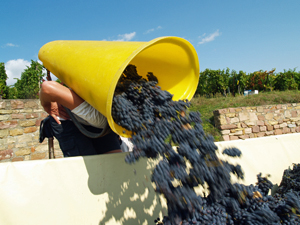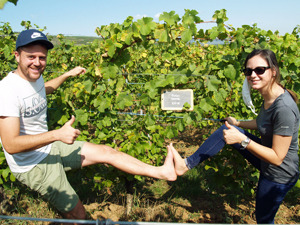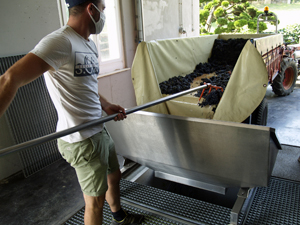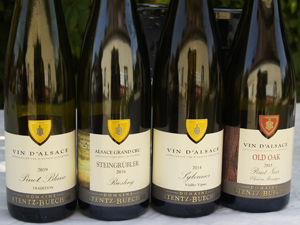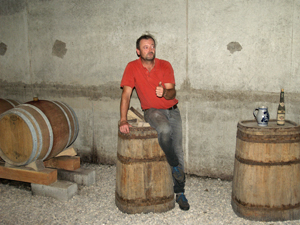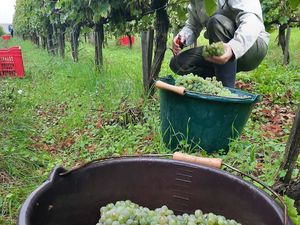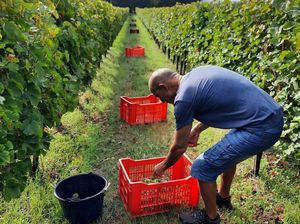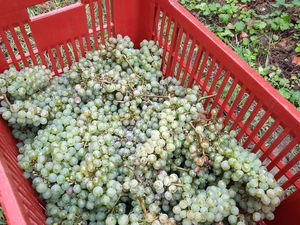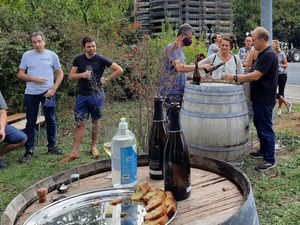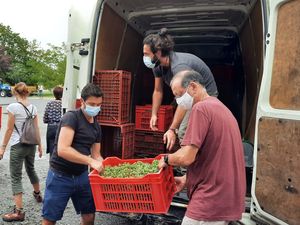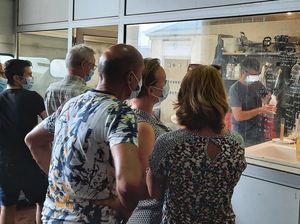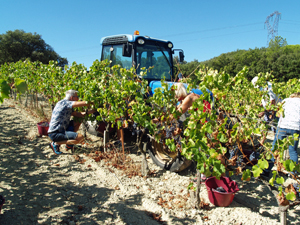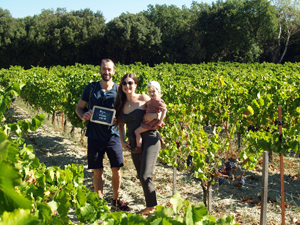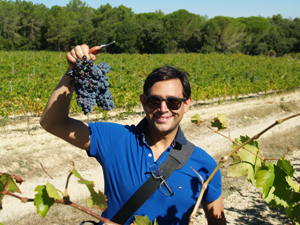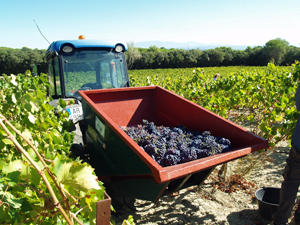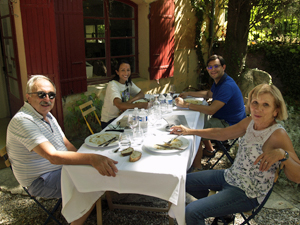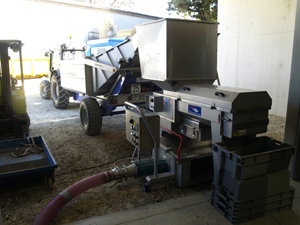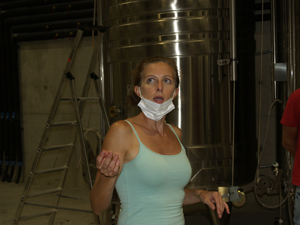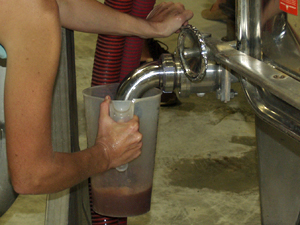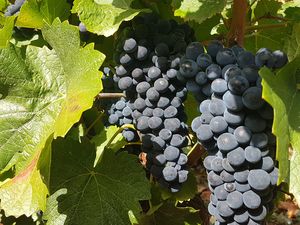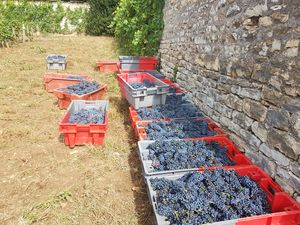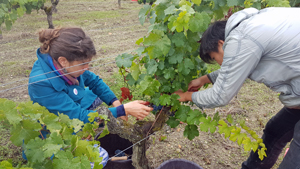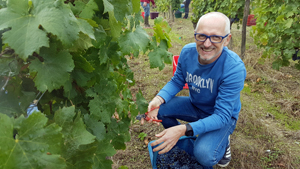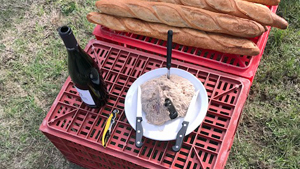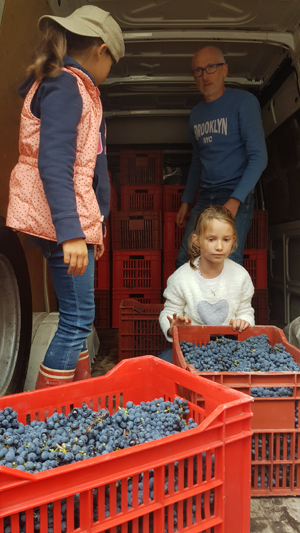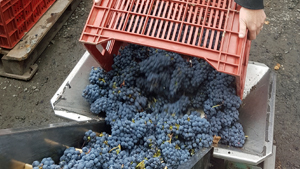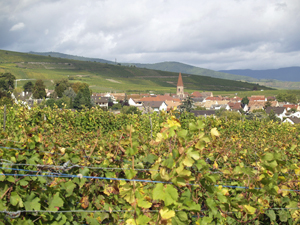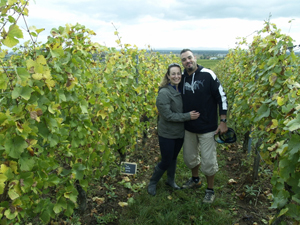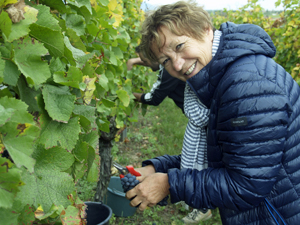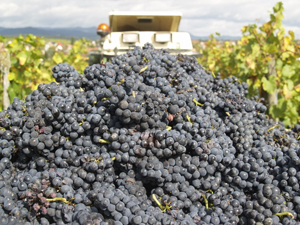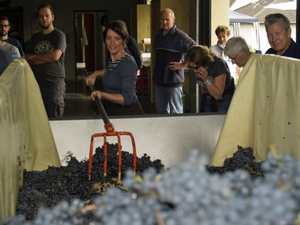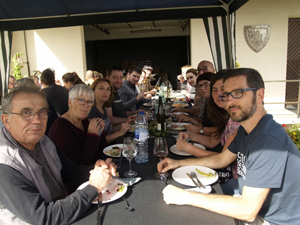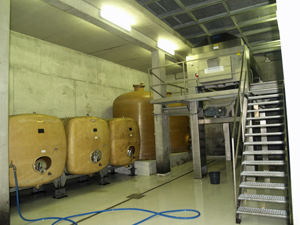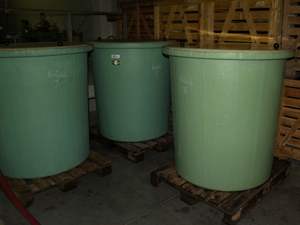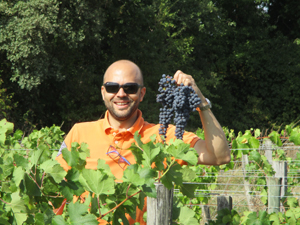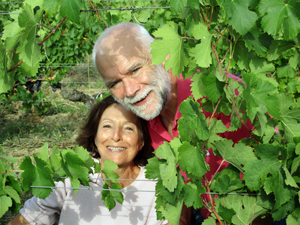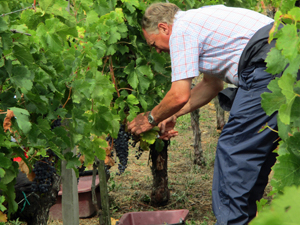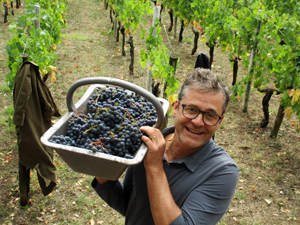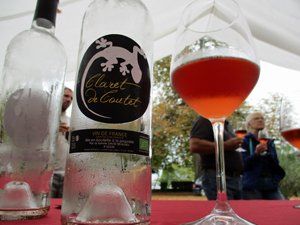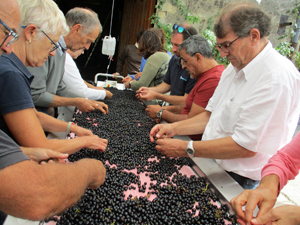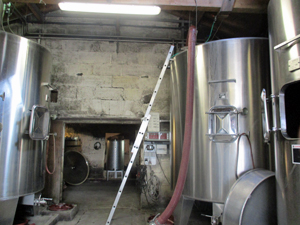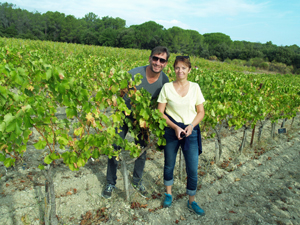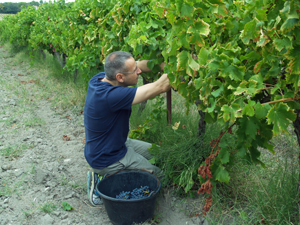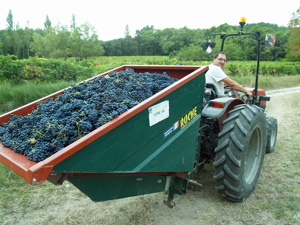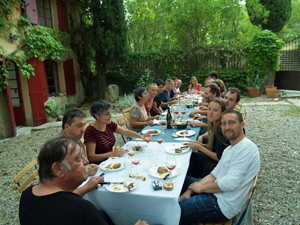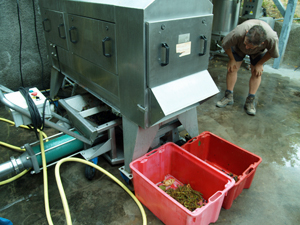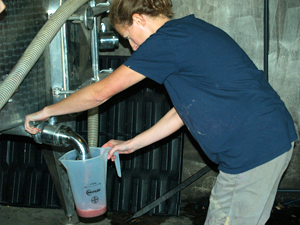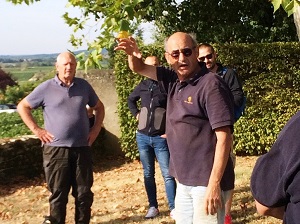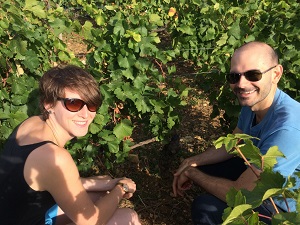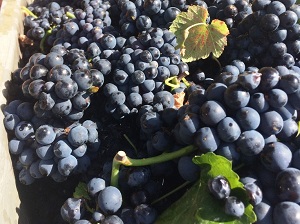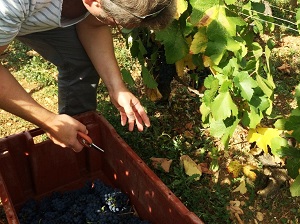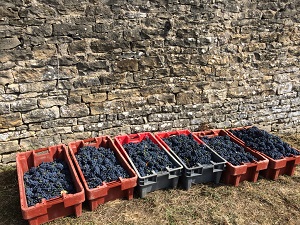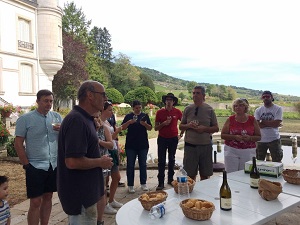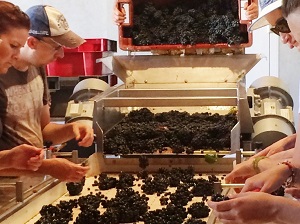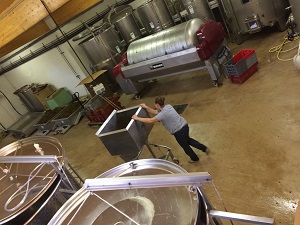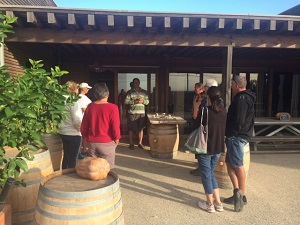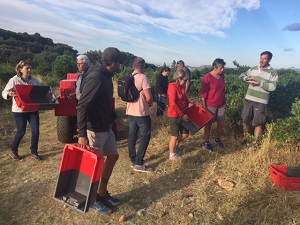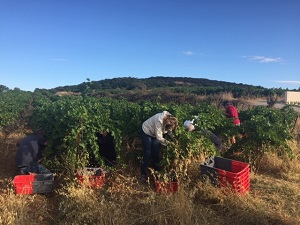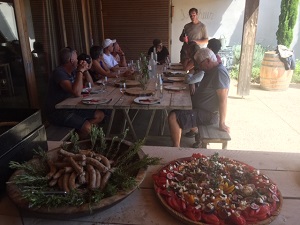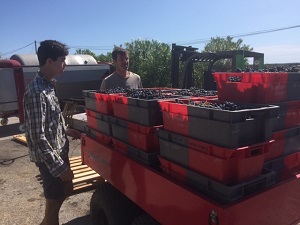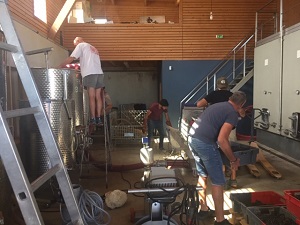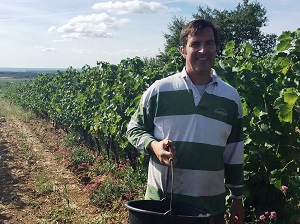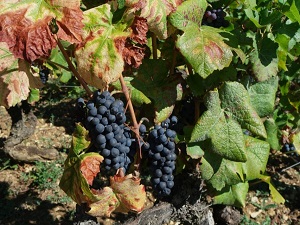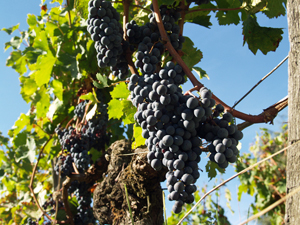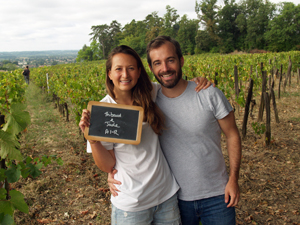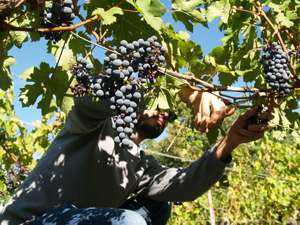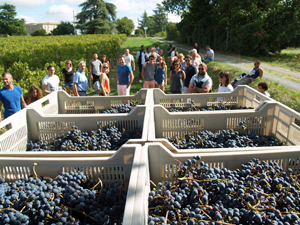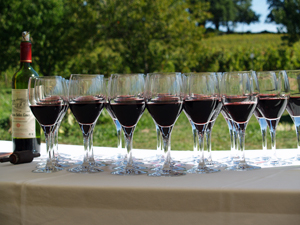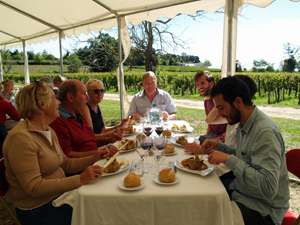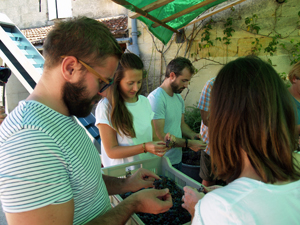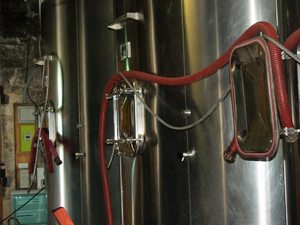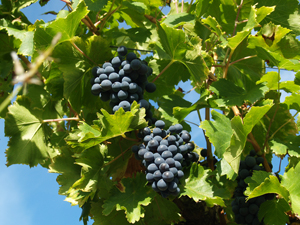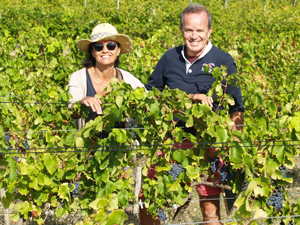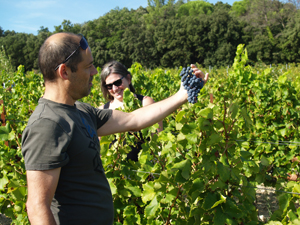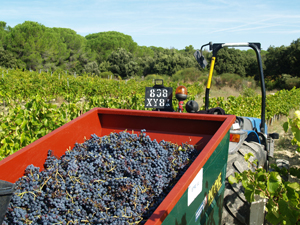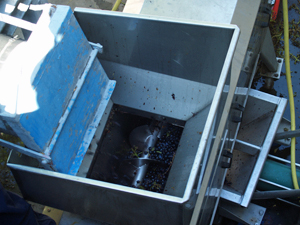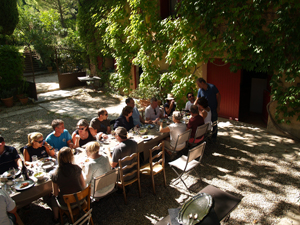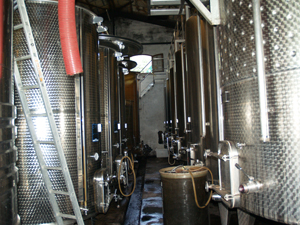Harvest season is once again upon us, and last weekend we headed to the Terrasses du Larzac wine-growing region in the Languedoc for a Harvest Experience Day at Château de Jonquières. The sun was shining and the grapes in perfect condition, so all was set for a great day.
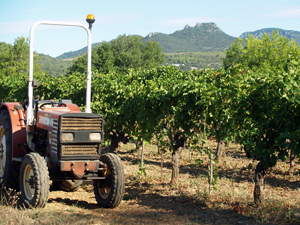
After a quick introduction to the winery, region, and family history by Charlotte and Clément, the 32nd generation of winemakers at the winery, we made our way to the plot of Syrah vines that we were to harvest. Charlotte explained which grapes to pick and how to pick them, and also showed us which grapes to leave behind so as to ensure that only the grapes that were fully ripe are used to make the wine.
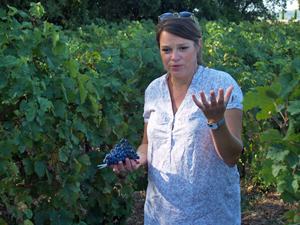
Clément then equipped us each with a bucket and pair of secateurs, and assigned us our rows. We then started to pick the grapes, slowly at first as we checked that we had indeed understood Charlotte’s instructions. But we soon got the hang of it, and the buckets started to quickly fill up.
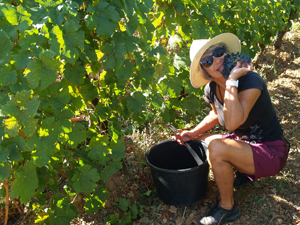
The task was made that much easier thanks to the quality of grapes, which were in very good condition, and so needed very little sorting. When in doubt whether any grapes were ripe enough, the best way to tell is to taste them, and we needed no encouragement to do so! You can taste straight away whether the grapes are ripe, because they are deliciously sweet. The unripe ones, even though they may at first look ripe, are too sharp.
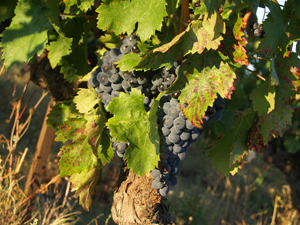
Once we had filled our buckets we emptied them into some crates, which we then loaded onto the trailer behind the tractor. We then took another crate and headed back to the rows to continue our harvest.
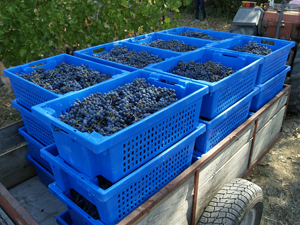
Having picked all the grapes in the plot of Syrah, we then followed their journey back to the chai. We then emptied the crates into the de-stemming machine to separate the grapes from the stalks.
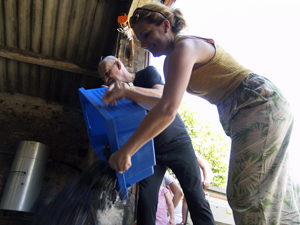
The stalks are jettisoned from the machine and will be spread in the vineyards to return some nutrients to the soil.
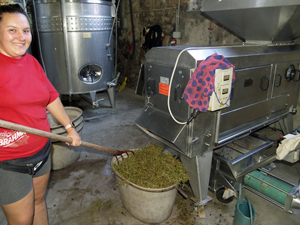
The grapes fall into the pump which transports them to the vat where they will start the transformation process into wine.
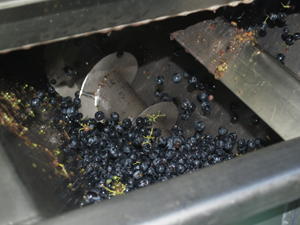
After the full morning’s programme, we made our way into the courtyard of the chateau, where Charlotte served us a lovely fresh glass of the 2020 Lansade white wine, a mineral wine that is a blend of 70% Chenin Blanc, and 30% Grenache Blanc.
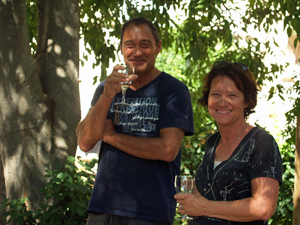
We then sat down to a delicious lunch, prepared by a local caterer, starting with a starter of terrine de porc aveyronnais and taboulé, accompanied by the 2020 Lansade red, the wine chosen for the Gourmet Odyssey Wine Experience. We enjoyed the richer 2019 Baronnie red with the duck main course, the 2020 Baronnie white with the cheese platter, and finished with the 2020 White Label wine with the strawberry macaron dessert.
After lunch, we strolled through the village and vineyards to visit the plot where our adopted vines are located. They were heavily laden with grapes, but they weren’t quite ripe enough for picking yet. We each took a few minutes to locate our micro-plot of vines and take some souvenir photos!
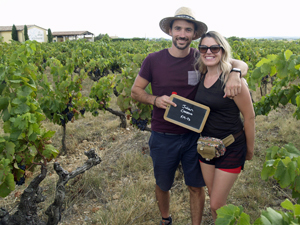
Harvesting isn’t just about picking grapes though! Back in the chai, there is much to do, and that is where Clément spends most of his time during the harvest. He explained the fermentation process and how he keeps the wine must in contact with the skins during the maceration process to extract the colour and tannins from the grape skin and pips.
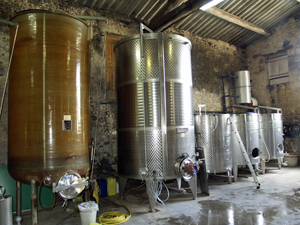
He showed us the mustimeter that he uses to analyse the sugar content of the juice that reduces during the fermentation process as the sugar is turned into alcohol. He also explained the differences between making red, white, and rosé wines.
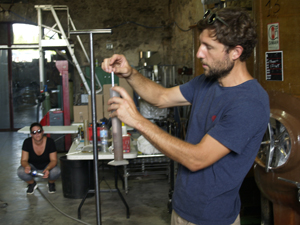
We finished the day with a final tasting, first of the juice from the grapes we had picked that morning. It was deliciously sweet and very enjoyable. We then compared it to the juice from another vat of Syrah that had been picked earlier in the week and had already started to ferment, noting the difference in colour, smell and taste.
Many thanks to Charlotte and Clément for their warm hospitality, and to all of the Gourmet Odyssey apprentice wine-makers for their hard work and jovial humour throughout the day! We’ll be back at Château de Jonquières next year for the Vinification Experience Days to discover the work that lies ahead to age, blend and bottle the wines.



